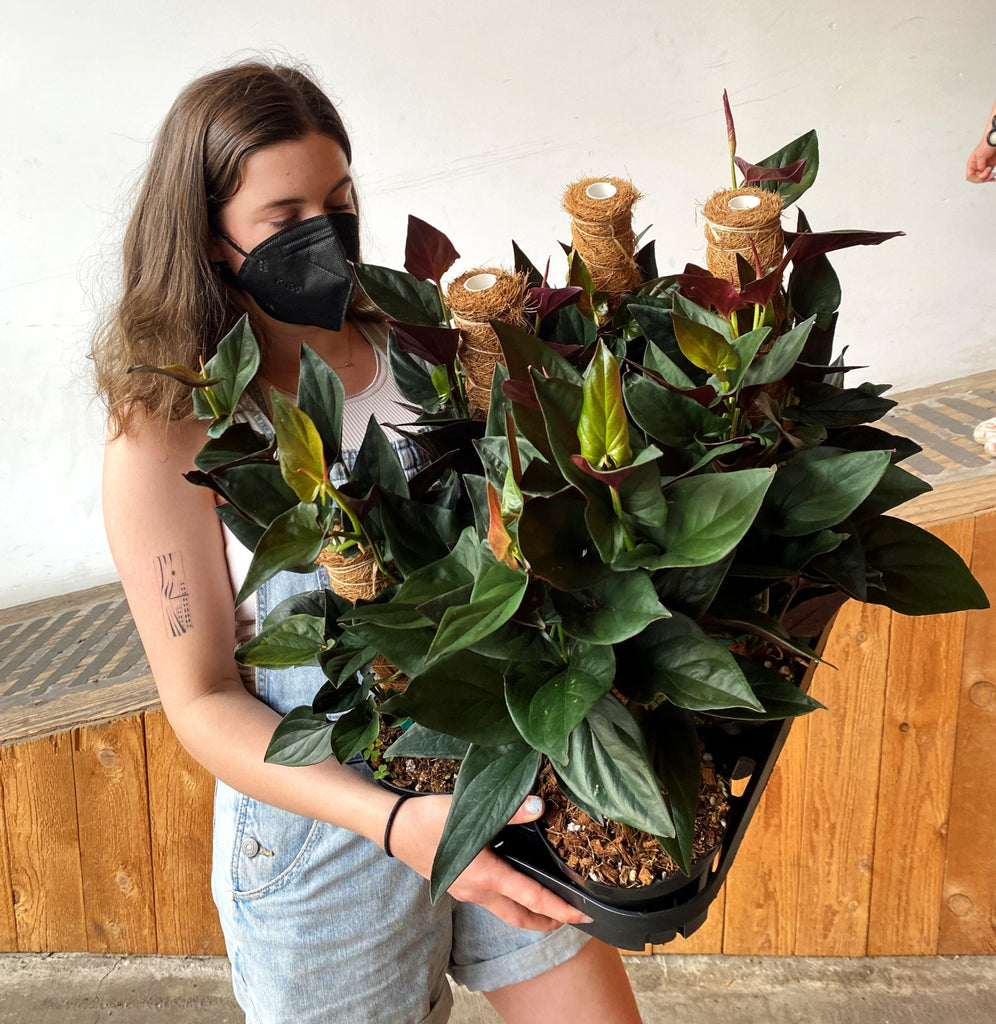Known for their arrowhead-shaped foliage, variety of color palettes, and ease of care, Syngonium are a must-have tropical for any plant collector! Read along as we dive into all things Syngonium and why they may be perfect for you!
An aroid with many nicknames, Syngonium are commonly referred to as arrowhead plants and, interestingly enough, Nephthytis! Though common names are often easier to pronounce than genus names, Syngonium got its strange nickname from its resemblance to the African aroid Nephthytis. The name Syngonium is derived from the Greek word for gonad, referring to the ovaries of female flowers.
Syngonium are popular for many reasons: their diverse cultivars, wide range of colors, and adaptability. Whether you’re a novice collector or a plant connoisseur, there is truly a Syngonium for everyone! These unique tropicals can be found in shades of green, white, yellow, black, and baby pink.
Syngonium are native to Mexico, as well as Central and South America. This environment has year-round high temperatures, medium to high humidity, and is covered in dense shaded rainforest, making it a perfect houseplant! The average household humidity is 50 to 60%, which works perfect for most plants in the genus. Warm and consistent indoor temperatures are perfect for keeping your Syngonium happy and healthy.

Growth Patterns
Young Syngonium often start out bushy, but this enchanting plant will eventually mature into a climbing vine. Syngonium can be trained to climb trellises, poles and even walls! If you are partial to Syngonium’s youthful, bushy form, these easy-going epiphytes can be pruned back to their original shape without any fuss.
Many Syngonium also have variable leaf morphology, meaning the leaves will change shape in response to how well its environment is contributing to its needs. The juvenile arrowhead shape changes as the vine grows up a support structure in bright light, and the upper lobes of the leaves eventually become exaggerated and separate into leaflets as the plant matures.

Syngonium Care
- Light: One of the many wonderful things about Syngonium is their ability to adapt to various lighting conditions. While this plant tolerates low to medium light, it thrives in bright, indirect light. Extended periods of direct sunlight can burn Syngonium foliage, so be sure to keep it away from windows with harsh light. A north- or east-facing window is ideal.
- Water: Syngonium, much like many other tropical plants, are not fans of drying out completely. Allow the plant to partially dry out between waterings, usually the top inch or two of the soil. Another tip: the leaves become wrinkled when the plant needs water!
- Humidity: Typical household humidity of 40-50% is suitable for Syngonium, however they can grow bigger and faster in higher humidity. Try using a pebble tray, placing a humidifier nearby, or putting your Syngonium in an area with 5 or more plants to provide some extra humidity.
- Soil: Syngonium prefer a soil blend of equal parts potting mix, orchid bark, and perlite.

Our Favorite Varieties

by Hannah Elders
